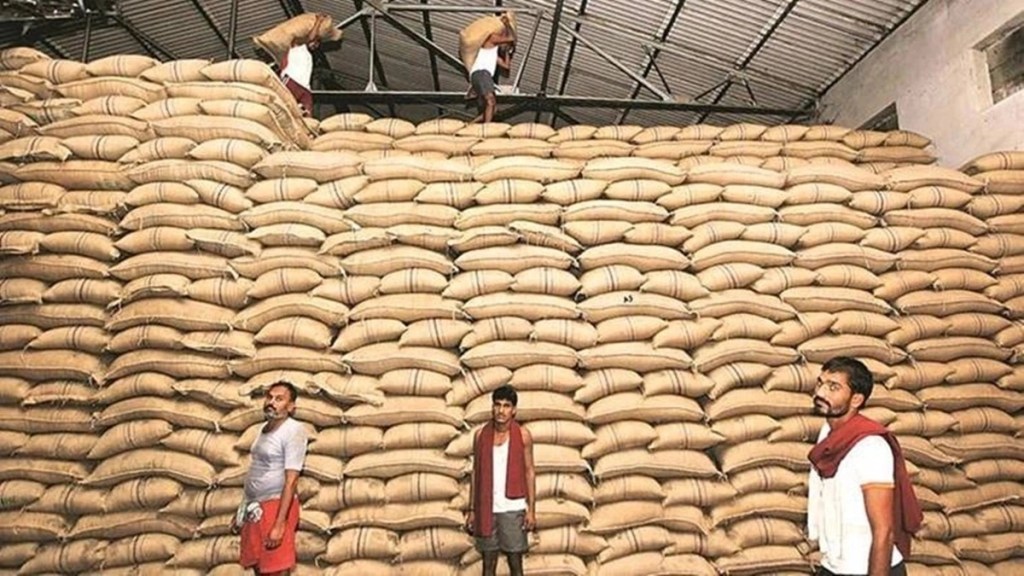By doing away with even the nominal prices paid by the 813 million beneficiaries for the food grains distributed under the National Food Security Act (NFSA) during 2023, the Cabinet made headlines last week. However, it was a case of deft fiscal management, as the government also quietly put an end to the expensive Pradhan Mantri Garib Kalyan Anna Yojana (PMGKAY), under which the same sections of people have been entitled to an additional 5 kg of grains free of cost, every month. Launched amid the first Covid wave in April 2020, the PMGKAY has cost the exchequer about Rs 3.9 trillion so far, going by the allocations. The cost of making NFSA supplies totally free of cost to the beneficiaries for a year is about Rs 20,000 crore, given the current “economic cost” of the grains. In comparison, to run the PMGKAY (also called free ration scheme) for one year, the government would have incurred expenditures to the tune of Rs 1.6-1.7 trillion.
Also Read: Free ration to poor for one year under NFSA
Since its launch, the free ration scheme has run continuously thanks to several extensions—the latest for three months to December 31, 2022. Finance ministry officials have been worried about further extensions, given the big fiscal burden it has caused. Currently, the NFSA benefits to consumers include rice supplied at Rs 3/kg and wheat at Rs 2/kg and coarse cereals at Rs 1/kg, up to a monthly limit of 5 kg per person. Besides, families covered under Antyodaya Anna Yojana—“the poorest of the poor”—get 35 kg of grains per month at the same prices.
Also Read: Sufficient grain stocks for PDS & PMGKAY: Govt
There is also another dimension to the Cabinet decision on NFSA. A few Opposition-ruled states have already buttressed the NFSA largesse and are seen to be extracting political dividends out of it, although the bulk of the scheme’s cost is borne by the Centre. With the latest decision, the NDA government has the scheme’s complete ownership in the eyes of the electorate. However, committing to supply NFSA grains free of cost to large sections of people is also fraught with the danger of creating a running fiscal cost. It will be much more difficult now to reduce the gap between the economic cost of grains and the “issue prices” or prices to the consumer. When the UPA government enacted the Act in 2013, a promise was made to revise the “issue price,” in tune with the economic cost, which includes MSP procurement expenses as well as storage, transportation and distribution costs. Since this revision never occurred, the gap between the economic cost and issue prices has widened (from Rs 2,305 in FY13 to Rs 3,670/quintal in FY23 for wheat, for instance), resulting in a big spike in food subsidy.
Note that the budgeted food subsidy was a whopping Rs 5.41 trillion in FY21 as compared to Rs 1 trillion in FY19, as the government chose to settle Rs 3.4 trillion loan availed from the NSSF in earlier years to finance the subsidy. The subsidy remained at an elevated level of Rs 2.86 trillion in FY22, and this year’s expenditure is seen at Rs 2.8 trillion, against the budgeted Rs 2.06 trillion. A high buffer of stocks is inflating the cost. Avoidable wastage and still-to-be-improved distribution infrastructure are other issues that need tackling. While such welfare schemes are indeed necessary, excesses could constrain the government’s ability to use its insufficient resources in other high-priority areas like education, skilling, heath, infrastructure and capital spending.

